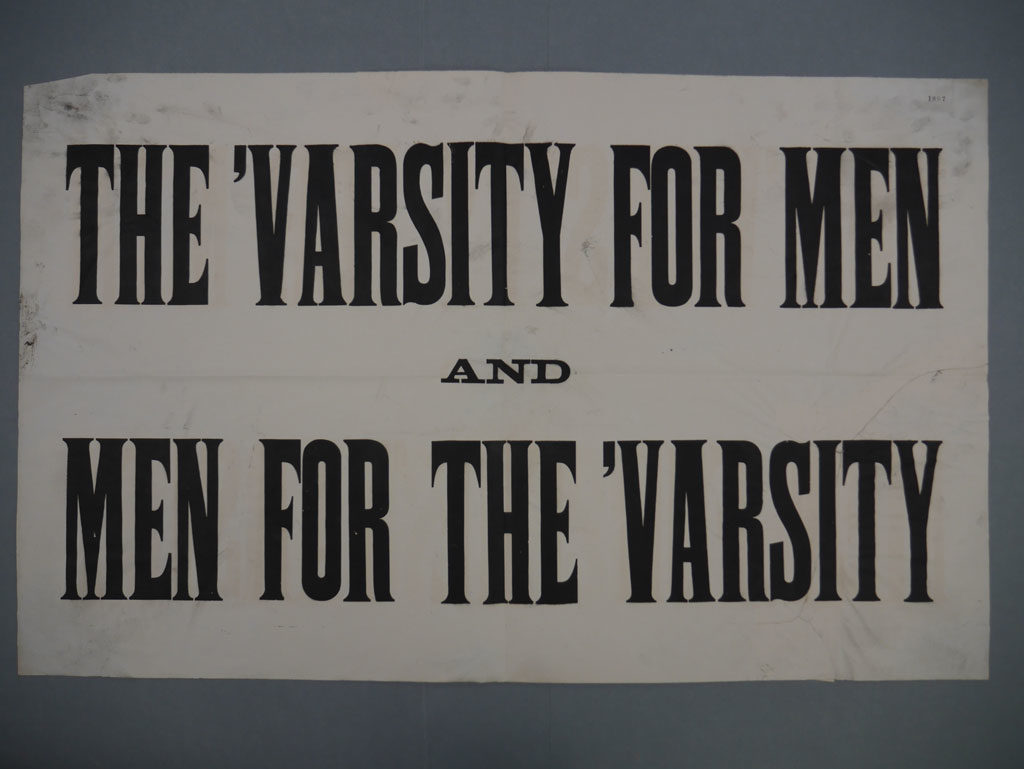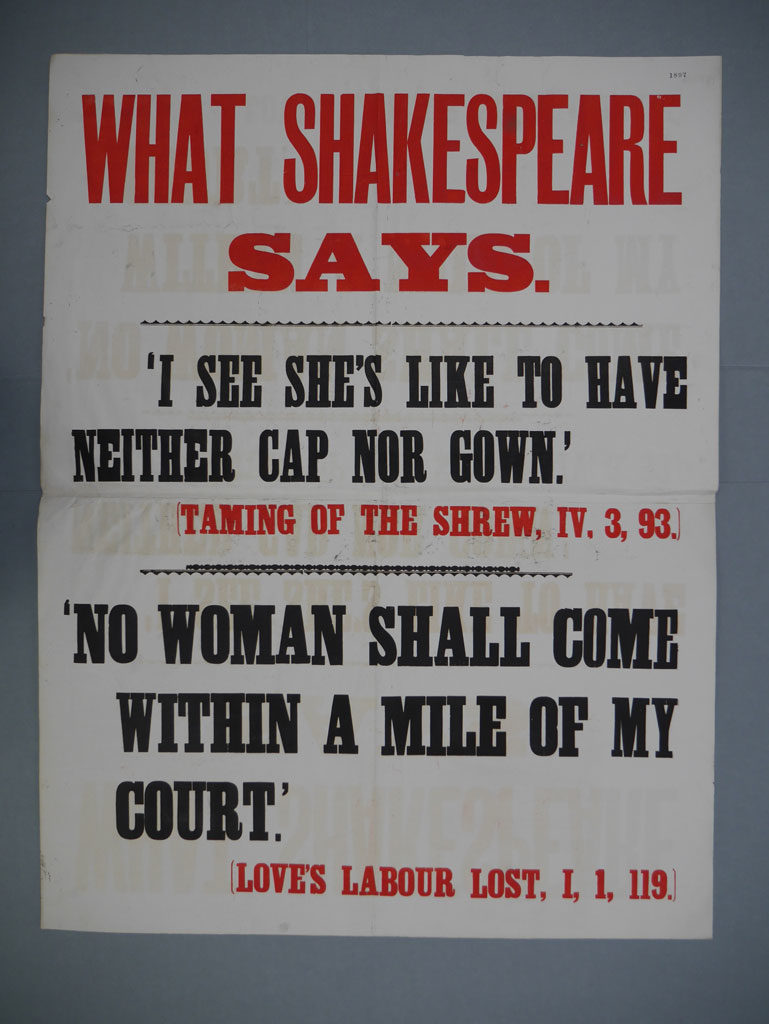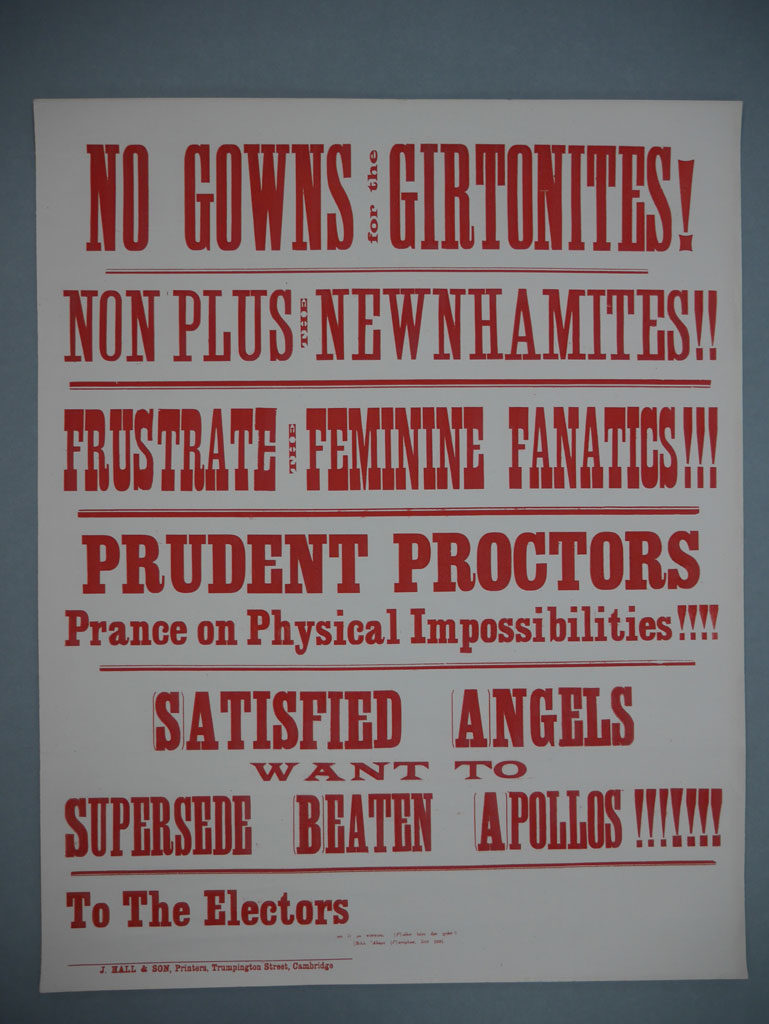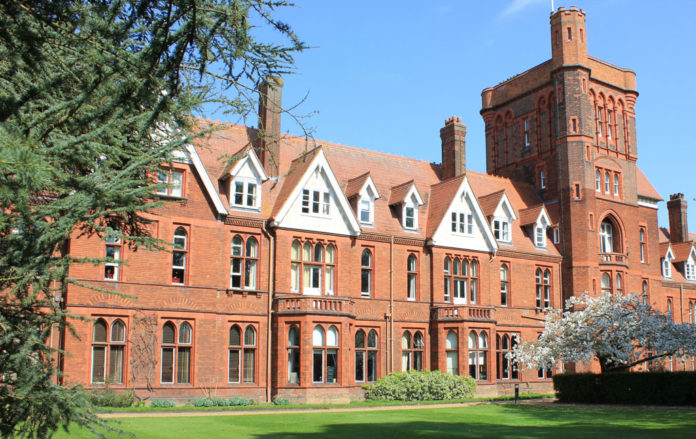150 years since women were first admitted to the University of Cambridge, how have things changed?
An exhibition at Cambridge University Library (The Rising Tide: Women at Cambridge; 14 October 2019 – March 2020) demonstrates through a collection of costume, letters and audio-visual material how hard women had to fight for basic rights at the University. Even after the establishment of Girton College in 1869 – the first women’s college at Cambridge and the first residential university establishment for women in the UK – it was far from plain sailing.

In fact, it was not until almost a century later in 1948 that Cambridge began to actually award degrees to women. This means it was the last of the big educational institutions to do so. The University of London had given degrees to women in the 1870s. Meanwhile in Cambridge, campaigners for women’s degrees faced violent opposition during the vote on the subject in 1897, often being pelted with eggs or risking being hit by rogue fireworks. A note written by undergraduates apologising for the damage that had been done to Newnham College during the riot of 1921 shows that this hostility continued well into the 20th century. Only in 1924 did the first woman, Katharine Margaret Wilson, complete a PhD at Cambridge (on show at The Rising Tide exhibition).
Though female students in the 60s and 70s had got a toe in the door, they were certainly not made to feel welcome. Dr Lucy Delap, exhibition co-curator and Fellow of Murray Edwards College, said: “From the founding of the first women’s college to the present day, the experience of women at Cambridge has differed greatly from their male counterparts. Though Girton College was established especially to give women the opportunity to study at the University, there were still many barriers that women faced – the first female students were required to ask permission to attend lectures, were not allowed to take exams without special permission, and usually had to be accompanied by chaperones in public until after the First World War.”

She continues: “Through The Rising Tide we hope to illustrate an all-encompassing picture of the incredible fight for gender equality within the University, while portraying the fascinating journeys of some of the militant, cussed and determined women of our institution too.”
Women showed great courage at Cambridge, not least those who worked at the colleges supporting students through the war. The new exhibition features an interview with 101-year-old Gwanwyn Sykes who worked in the kitchens at Girton and Newnham during the Second World War before becoming Assistant Bursar at the latter college. She remembers “baking” cardboard birthday cakes and smuggling leftovers from the High Table to distribute to hungry students (one of whom she would go on to marry!)
Nowadays, the tide has turned. Lucy Cavendish College, one of the only remaining women’s colleges in the UK (all three are Cambridge colleges) will admit men in 2021. Its president, Professor Dame Madeleine Atkins says there are now “other under-represented groups” given that mature women are no longer “severely under-represented” at Cambridge University – as they were in the 1960s when Lucy Cavendish was founded – the admission policy must change to reflect this. She says: “The demographics of participation in higher education have also changed, and there are now relatively fewer women unable to go to university at 18 or 19, regardless of their background.” Only Newnham and Murray Edwards College remain all women’s. Indeed, the world is now a different place. But that is not to say that inequality was never or does not continue to be an intractable problem in British society and, of course, more pertinently elsewhere.







 © 2024
© 2024